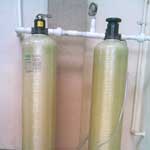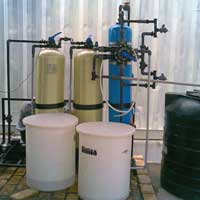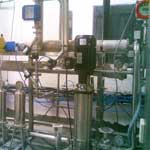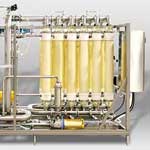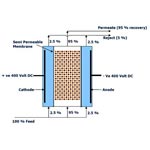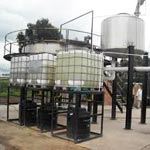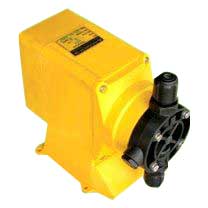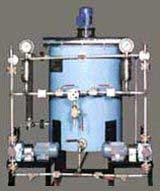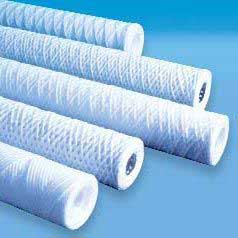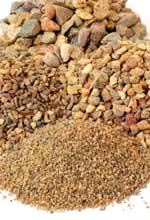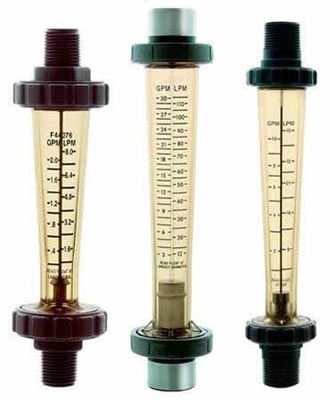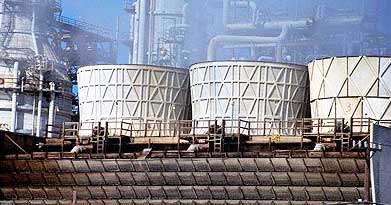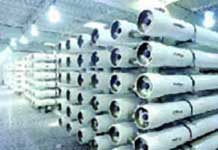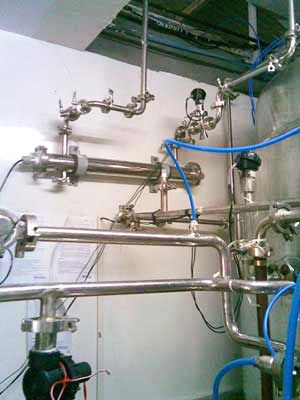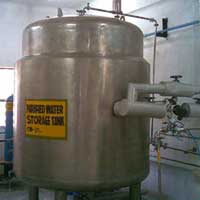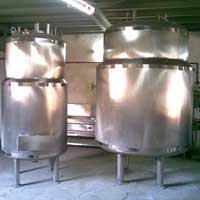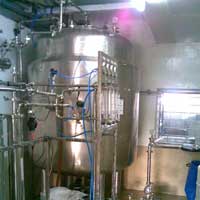Water Distribution System MT WDS 01
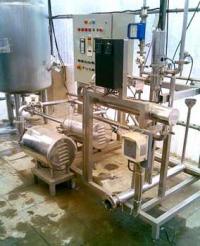
Water Distribution System MT WDS 01
Storage Tanks :
Storage tanks are of two types :
- Plain Storage Tanks. (for DM, Purified, RO Water)
- Jacketed Storage Tanks. (for WFI)
Storage Tanks are stills used to store Product Water (Purified Water or Distilled Water). These tanks have cGMP design as per ASME sec VIII Div-2 with both sides Torrespherical dished end for 100% drain ability, with appropriate Triclover nozzles for utilities. Storage tanks are vertical type with legs, can be rested on the floor. Storage Tanks are designed as per the tank turn over & tank change over to optimize the generation equipments. Storage tanks are used for sanitation of the piping by thermal or chemical media, which in turn sanitize the same. Material used for Storage tank is SS 316L for contact parts & SS 304 for non-contact parts. Storage tanks are closed type and it breathes through the vent filter.
Centrifugal Pumps :
Pumps are used to transfer product from one place to another by means of piping or for recirculation in distribution systems. These are located after Storage tanks for transfer or for recirculation of DM, Purified, RO, and WFI Water Distribution System. It plays very important role for distribution loops as the tank turn over which is one of the factor is maintained. These pumps have cGMP design with 100% drain ability. Mechanical seals preferred are Tungsten Carbide vs. Tungsten Carbide or Silicon Carbide v/s Silicon Carbide for Pharmaceutical applications. Inlet & Outlets nozzles are Triclover end. Centrifugal pumps with drain valves for easy draining are available on request.
Tubes :
Tubes are of three types :
- Seamless
- Semi seamless (CDW)
- ERW
Seamless Tubes are preferred for Pharmaceutical applications. All tubing’s are issued with necessary supporting documents (Test certificates). Tubing available for stringent applications like Pharmaceutical are electro polished and passivated by chemicals and determined roughness is achieved.
Heat Exchangers :
Heat exchangers are of two types:
- Hot type (with steam or hot water)
- Cold type (with cooling tower water of chilled water)
Heat exchangers are basically stills, which are designed as per ASME sec VIII DIV-2, as the heat transfer area is important factor. These are sanitary type with 100% drain ability; it may double tube sheet type or shell & tube type. There are two sides primary & secondary side, always primary side is utility and secondary side is product. All the product contact parts are SS 316L and utility contact parts are SS 304. Hot type Heat exchangers are basically used for sanitation of DM, RO, and Purified water line when the Storage tank is not jacketed. Cold type Heat exchangers are used when the recirculation loop is hot but the formulation requires cold water. These are economical as the surface area can be increased or decreased as per design considerations. These are not recommended by the regulatory authorities as they stills when not in use or by-passed. The product side has Triclover ends and the utility sides has flanged end or screwed end or as per requirement.
Plate types Heat exchangers are also available but the regulatory authorities do not recommend them as the have dead legs or dead pockets, and even the sealing gaskets are not food grade.
Valves :
There are two types of valves
- Manually operated
- Air or Electrically operated (Automatic / Actuated valves)
Valves are used to regulate, divert, and shut-off the product which is passing through the pipeline. Valves suggested for pharmaceutical applications are Diaphragm valve with EPDM or PTFE lined diaphragms, Ball valve with PTFE seats, Butterfly valve with silicon seat, they may be manual or automatic as per the requirement. Valves preferred by all pharmaceutical industries are diaphragm valves as they have 100% drain ability, when installed at 150. Diaphragm valve body is available in SS 316L but the bonnet is available in Cast Ion with epoxy coating or in SS 304.These valves have triclover ends or plain ends as per requirement. Diaphragm with PTFE lined is specifically used for Pure Steam, Water for Injection and some of the corrosive chemical transfer line.
Air or Electrically operated valves (Automatic / Actuated valves) are used when the manual operations are to be replaced by control panel operations, but the utilities like air or electricity has to be incorporated besides the valves. The utilities required for the automatic valves are 4-6 kg/cm2 for air & 23VAC/DC or 230VAC for electricity.
Flow Diversion Valves (FDV) :
There are two types of Flow Diversion Valves:
- Manually operated
- Air or Electrically operated (Automatic / Actuated valves)
Flow Diversion Valves are used to divert flow, as they have three ports in which one is inlet and other two are outlets. These valves may be 3-way ball valve, 3-way diaphragm valve or 3-way dumping or piston valve. FDV reduces the number of valves, as there are two outlets, which can be hooked up to two different lines. FDV’s are to be mounted in such position for 100% drain ability. The dead legs are minimized, as valves and fittings are reduced. FDV’s are used as dumping valve when conductivity fails in the recirculation loop.
Air or Electrically operated FDV’s (Automatic / Actuated valves) are used when the manual operations are to be replaced by control panel operations, but the utilities like air or electricity has to be incorporated besides the valves. The utilities required for the automatic valves are 4-6 kg/cm2 for air & 23VAC/DC or 230VAC for electricity.
Validation Documentation :
Proceeds in 4 stages to validate the system
- Design Qualification (DQ)
- Installation Qualification (IQ)
- Operational Qualification (OQ)
- Performance Qualification (PQ)
- Design Qualification includes designing of the generation & distribution system. Generation system means the raw quality water to final quality of water required by the end user. Distribution system means to maintain & circulate the generated quality of water, and to maintain the minimum velocity in the return line.
- Installation Qualification includes the installation of generation & distribution system. It means that the installed equipments are as per design with the same material of construction specified during designing. All the calibration certificates, material test certificates, mother instrument calibration certificates, drawing of all equipments & distribution loop.
- Operational Qualification includes the operation of generation & distribution system. It means that the utilities required for the specified equipments are as per the design qualification. It also includes the functioning of all the electrical & pneumatic equipments through the control panel or PLC.
- Performance Qualification includes the performance of the generation & distribution system. It means that the installed equipments are giving the same performance as specified in the design. The validation executives check all quality and quantity of generated and distributed water as per design qualification.
